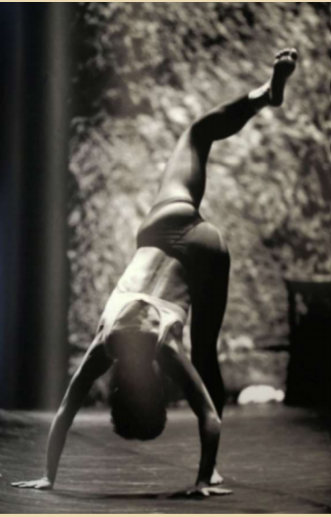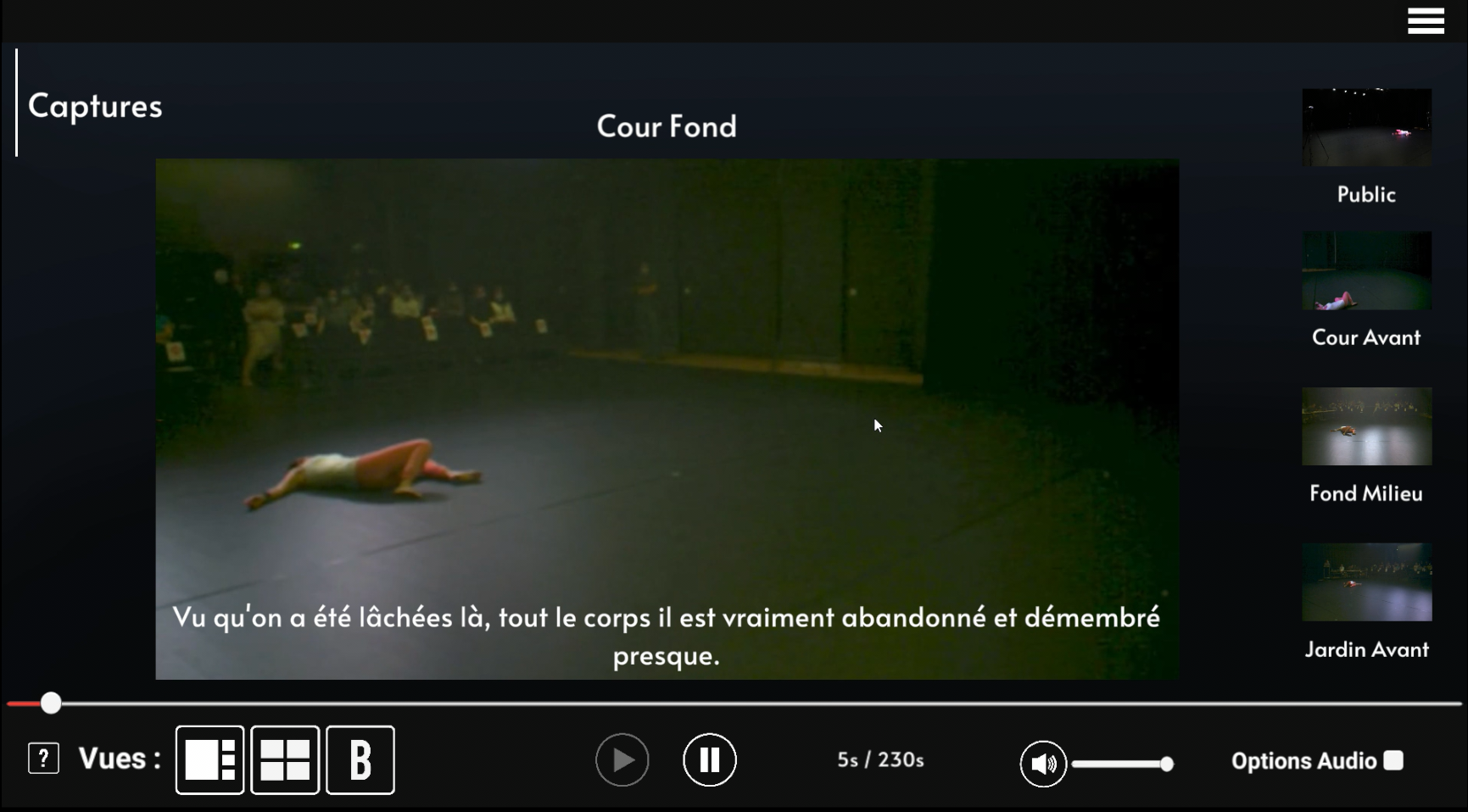The Performance Lab
Between 2018 and 2021, the interdisciplinary IDEX Performance Lab project developed a multidisciplinary scientific dynamic including performing arts, social sciences and computer science at the UGA. Collectively, this community developed methods of fieldwork, data collection and documentation, creating new forms of performance culture and digital platforms.
The “Body Library” is the result of the Performance Lab's “Gestures & frequencies” research initiated by Lionel Reveret (INRIA) and Gretchen Schiller (UGA).
The aim of the archive was to diversify the perspectives from which the body is represented and the dance is documented. Movement capture tests in the dancer's working environment formed the basis of this multi-layered archive, which was augmented by the dancer's internal dramaturgy, Benesh notation and drawing. The team focused on highlighting the vocal embodied memory of the dancer.
The genesis of the project
From the outset, the “Bibliothèque corporelle” project has been based on two observations: in the world of dance, the dancer’s voice is rarely taken into account and dance archives are often limited to video recordings, once again excluding the dancer's experience. The project was therefore immediately conceived in its multimodal dimension, bringing together participants from a variety of fields: researchers in the performing arts, music, biomechanics, the plastic arts and computer science.
The movement capture sessions in the studio were also contextualised by combining movement capture and the performer's vocalized oral history. To this end, Stéphanie Pons' voice was called upon extensively, enabling us to extract three different temporalities from the archiving process: the past time of the Ballet Preljocaj's dance, the present time of the recording, and the later time of feedback on the experience.
The first two approaches to this archive of the dancer were the sonification of gesture with Andrea Giomi (UGA) and 3D modelling with Lionel Reveret. As the challenge was not only to translate the complexity of the movements, but also to reflect on the body-memory of the dancer Stéphanie Pons, 3D modelling was one of the avenues pursued by the team. Indeed, movement capture by the INRIA team offered an interesting modality for the multi-layer archive: the multiplication of points of view of the dance. The team tried to get closer to the conditions of the revival of the ballet Paysage après la bataille and invited the public to these recordings, reconstituting the lighting for the performance and using the original musical track.
We chose to explore more of Stéphanie Pons' voice recordings by capturing her voicing and vocalization during the dance, after the dance and by watching her dance. The diversity and richness of the words collected enabled us to transfer the movement to another materiality: that of the archive.
The challenge was then to compose and arrange the archive with all these vocal, audiovisual and textual layers, and with the drawings by Lisa Moore, in order to translate the movements into words and the images into gestures. The challenge lay in synchronising the different modalities and respecting the performer's internal dramaturgy. The voice became a motif to which other materials were juxtaposed, all of which made it possible to reveal a past reality, that of the body-memory, and its current traces in the living archive of the dancer.
As part of the process of creating a multimodal dance archive, the Performance Lab team felt it necessary to call on the work of Dany Lévêque and integrate it into the archive Thanks to his extremely detailed knowledge of Angelin Preljocaj's work, Dany Lévêque provided invaluable support to the team in sharing and then breaking down in time the score of the choreographic fragment danced by Stéphanie Pons. His participation in the project made it easier to synchronise the score with the recordings of the dance, whose temporalities diverge, and to offer an expert eye on the reinvestment of this dance created more than 20 years ago. It should be noted that in the Benesh notation system, repeated dance parts are not rewritten on the score. In the recording, the speed of the notation is synchronised with the dancer's movements. The dancer's reenactment, based on her memory and without a rehearsal director, shows minimal differences between the score and her interpretation.
The “Bibliothèque corporelle” multimodal archive was designed and developed over a period of two years, involving a wide range of players. The aim of this tool is to inspire the world of performing arts research and to propose other ways of building archives. What's more, the rare access to the performer's oral history, body memory and internal dramaturgy offers an unprecedented insight into movement, making expression much more concrete. In view of the immense wealth of material collected during this project, and its sheer number, it should be noted that this archive of Stéphanie Pons' dance could undergo other versions, other combinations of strata and other perceptions of this choreographic fragment.
In 2025, part of the tool was adapted for the web.




